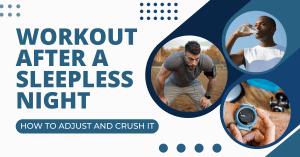Running shoe advertisements are full of claims about all the technology in the latest shoes.
As an example, open up any running magazine or go to any running website and you’ll see advertisements about shoes with high-tech cushioning or foot control devices that promise a smooth ride or strong support when you run.
The usefulness of these technological innovations has been questioned many times –does a gel pad or air bubble cushion really make a difference when compared to plain foam? While running shoe companies have toned down their assertions in recent years, one of the most interesting criticisms of the claims made in shoe advertisements is their direct effect on running mechanics.
So, the important question is: do runners actually run differently if they think their shoes are better designed or more cushioned?
Do running shoes really work as advertisements say
Most of the research for this idea comes from articles published by a research group headed by Steven Robbins in Canada. In a series of papers published in the late 1980s through the 1990s, Robbins and his fellow researchers laid out data which, in their opinion, indicated that modern running shoes are unsafe and deceptively marketed.
Does your brain buy into the advertised claims?
In one study, Steven Robbins and Gerard Gouw demonstrated that subjects exposed to simulated impacts tended to perceive that the impact forces were lower when their foot rested on a flat, shoe-like substrate vs. on a textured one, even though the true impact force was the same.
Hypothesizing that a “perceptual illusion” about the efficacy of a shoe’s cushioning might result in runners actually hitting the ground harder in modern running shoes, Robbins designed another study to test how people respond to deceptive claims about cushioning.
This time, 15 volunteers performed “step-downs” from a short perch onto a slab of EVA foam, the same material used for running shoe midsoles. The volunteers performed several step-downs onto three different slabs of EVA, plus a control series stepping onto the bare force platform underneath. For each different EVA slab, the subjects were told a different message:
One slab of foam was described as being used in cheap, poor-quality running shoes that resulted in many injuries. Another was described as an advanced, state-of-the-art cushioning material used in high-quality, expensive running shoes. One was described as never having been used in shoes before, with uncertain cushioning properties.
The deception came in the messages about the EVA foam slabs; while the volunteers thought they were stepping down onto different materials, the foam slabs differed only in their appearance—their true cushioning properties were the same!
Despite this, the impact forces that resulted when the test subjects stepped down were significantly higher when stepping onto the “high-quality cushioning” foam when compared to the “cheap, poor-quality cushioning” foam.
Robbins concluded that the study subjects hit the ground harder because they expected more cushioning from the material underfoot, and suggested that runners could be similarly deceived by shoe advertisements highlighting the latest and greatest cushioning technology.
Recent studies
Robbins’ work was not without its detractors. A letter to the scientific journal which published these studies, sent by E.C. Frederick and Peter Cavenagh, both esteemed biomechanics researchers, sharply criticized the design of these deceptive-cushioning studies, pointing out that they did not use real running shoes and did not involve any actual running.
Until relatively recently, that was the end of the story on the effects of shoe comments on gait mechanics. But a pair of studies published in 1999 and 2001 directly addressed the effects of deceptive information about shoe design. Both studies used data derived from an experiment using a group of 17 female college students.
The volunteers were asked to walk down a 10-meter runway in three pairs of shoes. The first two pairs of shoes were described as identical, “standard” athletic shoes, while the third was described as containing a “revolutionary new shock absorbing material.” In fact, one pair of the “standard” shoes was firmer than the other (though they appeared identical), and the “new” shoe was exactly the same as the firmer version of the standard shoe.
While the volunteers walked in the different pairs of shoes, the researchers measured the impact forces and rearfoot motion in each condition and asked the volunteers to rate how they perceived the cushioning of each shoe.
- While some of the subjects did indeed perceive the “new” shoe material as providing better cushioning, there was no effect on the actual impact forces with the ground.
- Additionally, the pronation patterns of the subjects’ feet followed the expected trend based on the stiffness of the midsole and showed no evidence of being influenced by the shoe descriptions provided by the researchers.
Though the deceptive comments were enough to fool a few of the study’s participants into thinking the shoes they were wearing provided superior cushioning, their own body knew better.
These studies could be criticized too, as they also didn’t involve actual running. But given that walking, a continuous, cyclical activity, is much more similar to running than isolated step-downs, we should be more inclined to believe these later studies than the earlier ones by Robbins et al.
Further, there is research in real runners that demonstrates that your body can automatically recalibrate when it encounters a surface of a different stiffness—like when you transition from running on a sidewalk to running on grass. Here’s the full report
So, is there any reason to believe running shoe ads that trumpet their latest and greatest shoe technology? Probably not. But there’s also no hazard or deception if you buy into the advertising: even if you really do believe the hype, your body is smart enough to run the right way regardless.









4 Responses
I read a lot of interesting posts here. Probably you
spend a lot of time writing, i know how to save you a lot of time, there is an online tool that creates
high quality, google friendly posts in seconds, just search in google – laranitas free content
source
It is not the impact on the ground that you are supposed to be measuring, It is the impact on the foot.
I know when I have tried running in lightly-cushioned or minimalist shoes my teeth have rattled together. That’s not a perceptual illusion.
Interesting feedback Andrew, very good point. Not something you want to be feeling when running. Thanks for your input!